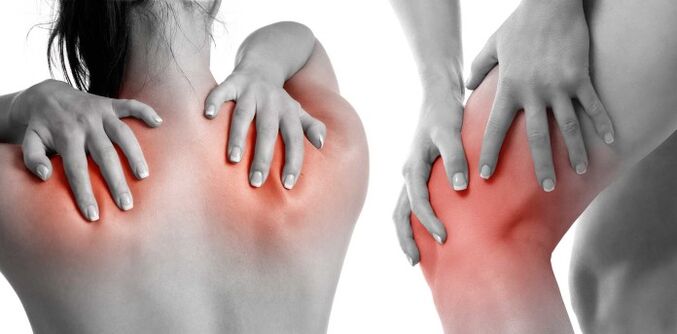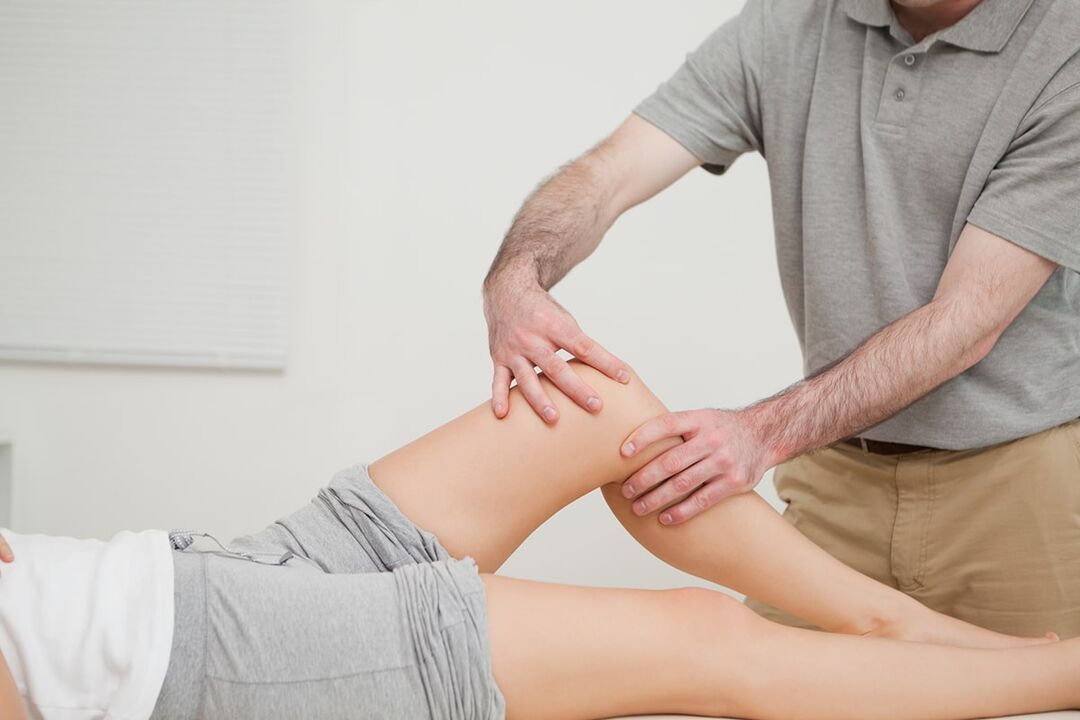One of the most common reasons people seek medical help is back pain and joints. Maybe no one is not affected by these problems, and unfortunately the pain in the back and joints makes it more lasting to remind yourself.
One of the most common diseases of the musculoskeletal system is arthritis. We will tell you about him in this article.
Arthritis is a chronic disease of chronic diseases with degenerative disease properties, in which articular cartilage and joint capsule gradually occur. The bone tissue directly below the porous cartilage thickens unevenly, compensating for loads, that is, joint deformation.
In addition, this disease is called: osteoarthritis deformed joints or arthritis because initial damage to cartilage tissue can lead to an inflammatory process of the joint.
What is the difference between arthritis?

Both diseases are often confused due to the harmony of the names and can affect the joints due to arthritis and arthritis. At the same time, these are different diseases and it is very important that they are treated differently.
Arthritis most often develops in the elderly (over 45 years old), which gradually leads to age-related joint deformation.
On the contrary, arthritis is more common in younger ages (up to 40 years old). Of course, for example, arthritis may develop after a cold or flu in the elderly, or young people take the athlete seriously in the context of physical overload, joint joints can occur.
2% of the world's population suffers from various arthritis, usually young people. About 10% of planets suffer from arthritis, and if the impact of young arthritis is relatively small, the number of arthritis patients will increase repeatedly in the elderly. In the 50-year-old age group, every third person has these or other phenomena, while each or the other has 70-year-old arthritis.
If only the joints suffer from joint distress and the whole body is not usually involved in the pathological process, then arthritis, on the contrary, the entire body is contained in the inflammation process, and "ICBERG" is inflammation in arthritis, because internal organs almost always suffer from internal organs (most often in the heart, liver, kidney, kidney) and are performed when discomfort, because the scope of the disease is certain. The patient's life.
Through arthritis, inflammation in the joints is usually manifested by their redness, swelling, severe pain that does not stop and sometimes exacerbate at night.
With joints acting, pain is mainly manifested only when exercise or physically exhausted, and the pain may not be very strong (especially at the beginning of the disease). This is why people often start this disease. In the second stage, the pain has been shown under a slight load, even in the third stage – even in a resting state. However, unlike arthritis, it can resolve if the patient manages to take a convenient location.
With the influence of the joint, the affected joint areas appear thick and brittle, which occurs due to the damage to the cartilage layer and bone friction. The further the damage of the joint, the stronger the tightening.
As the joints are affected, the amplitude of movement of the affected joints decreases, and arthritis is characterized by stiffness throughout the body or in the joints.
Inflammation of joints in arthritis is most often caused by infection or failure of immune system activity (autoimmune processes), so arthritis is less likely to indicate a common metabolic disease.
Types of joints
Arthritis is a group of joint diseases with different origins but closely developed mechanisms. Most commonly, arthritis affects large joints.
In terms of localization, there are several types of arthritis that are distinguished: provodity-osteoarthritis deformation of the knee, and deformed hip osteoarthritis that makes the shoulder joint fraud deformity the most serious joint type.
Arthritis of small joints is less common, usually the joints suffered by older people.
Arthritis of the foot joint usually occurs.
Spinal arthritis - Arthritis of the spinal joints (often encountered spinal diseases).
Joint symptoms
The main clinical symptom of joints is joint pain, which has a reduced mobility. The specific symptoms and their severity depend on the joint stage and the degree of destructive changes in the joint.
Causes of joints
- Injuries of joints and bones, micro-quantification of joint tissue, excessive loading during production or exercise, obesity, mechanical damage to joints during surgery, and even violations of posture or flat feet.
- Genetic diseases in the cartilage tissue of the joints cause their accelerated destruction. This may be a hereditary congenital defect in the musculoskeletal system: dysplasia, hypermotor of the joint, flat feet or other defects, which are the causes of trauma in certain parts of the joint tissue and thus lead to the development of arthritis. For example: Usually, osteoarthritis deformation associated with upper limbs is found in women and is inherited by the maternal line.
- Autoimmune diseases (psoriasis, gout, rheumatoid arthritis).
- Other joint diseases (Inflammatory joint diseases of acute and chronic arthritis, bursitis, synovitis and various other causes may lead to the development of osteoarthritis).
- Vascular disease.
- Diseases that cause circulatory diseases in the surrounding tissues lead to joint dystrophy (varicose veins that regulate internal inflammation, atherosclerosis of lower limb blood vessels, and even normal myotherosclerosis in all of us).
- Endocrine diseases, metabolic diseases, mineral deficiency, trace elements and vitamins can cause changes in the composition of cartilage, joint fluid and bone tissue, which gradually lead to invasion of recovery processes and joint destruction.
How joints develop

Another arthritis associated with body aging is developed according to the following protocol. This process begins with circulatory diseases in the periosteal capillaries, so the nutrition of the cartilage is disturbed. Gradually, the cartilage becomes thinner, loses elasticity, cracks appear, the smoothness of the joint surface is lost, and the amount of synovial fluid is reduced, thus ensuring the sliding of the joint surface. As a result, pain and tightness appear when moving. Over time, the width of joint seams decreases and bone plants (bone spikes) form on the joint surface. Eventually, the joint deforms and its movement decreases.
Over the years, the development of this joint form has gradually occurred.
Other forms of arthritis can develop according to different mechanisms (e. g. , posttraumatic arthritis), but pathological changes in the joint will be similar.
Joint therapy
If you are diagnosed with arthritis or osteoarthritis, you will have difficulties, but it is very important not to give up without losing the successful outcome.
If any pain in the joint can impair its function and other symptoms, you must consult a doctor. The experts working on joint issues are rheumatologists.
The main task of treatment is to relieve pain and restore the affected joint structure (mainly cartilage) and the motor function of the joint. Only by starting treatment in time can success be achieved. If you start treating arthritis early, it is possible not only to pause the development of the pathological process, but to even partially restore damaged cartilage.
If the cause of the disease is known, you must try to eliminate it. If you weigh too much, you must lose weight. If a metabolic or hormonal background is violated, force should be directed to its standardization. If problems arise due to workers or sports burdens, the area of activity can be changed rather than abuse of sports.
Drug choice is a doctor's task and you should not prescribe it yourself. In most cases, the following combinations of drugs are used for treatment:
- painkillers (analgesic);
- Hormonal and nonsteroidal anti-inflammatory drugs;
- Protective agent (funding feed and recovery of cartilage).
Getting rid of excessive weight is the most important link in joint therapy treatment, because extra weight will not only increase the load on the joints during exercise, but also increase the resting state. Among patients who are able to lose weight, the disease progresses much slower than those who have not succeeded. However, there is another aspect of the medal. If you place the disease alone, it is unlikely to lose weight at all. When joints are hurt a lot, even the simplest performance of exercises can turn into torture.
So you need to act in multiple directions immediately: try to lose weight, treat potential illnesses and change your lifestyle.
protector
All patients with arthritis are funded from a set of treads that inhibit cartilage damage and even recover. The composition of this drug includes substances of glucosamine and sulfates (or a combination of them) that help moisturize the cartilage, increase its elasticity, improve nutrition and activate the recovery process therein. Such funds also have analgesic effects, but this effect will develop some time after the hospitalization begins.
Folk therapy for treating arthritis
Folk therapy has been successfully used to treat arthritis and arthritis since ancient times. Their main tasks are normalization of metabolism, stimulating the regeneration process of cartilage, cleaning toxins, eliminating inflammatory processes in joints and cellular tissues, thereby eliminating pain and edema in it. These methods include:
Sables - Relieves joint inflammation and relieves joint pain and swelling.
Dandelion Root - Improves joint elasticity.
IVA bark contains lignin, tannin, salicylic acid glycoside, ascorbic acid, anthocyanins, and pectin.
Field ponytail - Helps restore cartilage tissue from the joints.
Birch Leaf - With tin agents removing uric acid from the kidneys and joints, external use is used in steam and massage in the bathtub.
Timyan - Helps collagen synthesis.
Forest strawberries - Reduces swelling of tissue around joints.

A series - with anti-inflammatory effects, with a series of baths, improving blood circulation in human tissues.
Ointment for juniper berries, nettle leaves and butter to relieve joint pain.
Ointment made from horseradish and petroleum jelly crushed roots - Reduces pain and reduces the inflammatory process of joints.
Jerusalem artichokes - To relieve inflammation of the joints and relieve pain.
Maker - Improve metabolism and remove salt from joints.
Clear toxins and toxins from herbal teas with thyme, chain raspberries, rose hips, oregano and mint.
Tin agent for oral management of golden beard
Cut 10-15 joints, grate along and down, pour in 0. 5 liter of vodka, and hold on in a dark place for two weeks.
Apply one tablespoon 3 times a day one hour before meals. You can't drink or clog anything. The treatment process is 7-10 days.
The same infusion can be used as a sore compression.
Golden beard
This ointment is prepared based on petroleum jelly, baby cream or indoor fat. Grind the leaves and stems of the golden beard, squeeze out the juice from the resulting juice and mix with cream or fat 1: 3. Keep refrigerated. It is used to rub the joints for arthritis and arthritis.
Honey and joint pain aspirin
Grind 10 pieces of ytaacetylsalicylic acid (aspirin) into powder and mix thoroughly from 200 g of honey (preferably liquid). Regularly place the mixture in a deep warm place and mix regularly. The joints were lubricated with the resulting tool, then covered with polyethylene and then wrapped with a wool scarf. Leave compression all night. Execute the program until it is mitigated.
Under the influence of this tool, a light red and burning feeling may occur, but this effect will spread over time. This recipe is not suitable for people with allergies beekeeping products or aspirin.














































